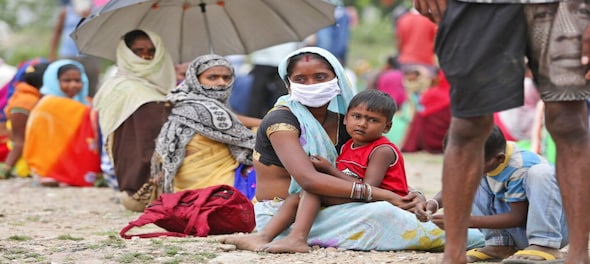
COVID-19 has caused a definite drag in our economic growth story and fallout on indicators for human development is near certain. Hospitals and frontline health workers are now exclusively focused to tackle the pandemic, despite its low fatality rates. Given its countermeasures, we are seeing a huge dip in demand for other essential health services.
There is a growing need to bring everyone's attention back to other health issues. Luckily, some have focused on ways to increase demand for health services even during better times i.e. behavioural scientists. We layout how behavioural science will be the crucial spanner in our toolbox, as we retune back our health system.
In the context of decades of India’s hard-fought battles with public health issues like Polio, TB and other such diseases, this has many consequences. WHO reports that millions of children are at risk due to hampered immunisation services against vaccine-preventable diseases. In the cases of diseases like TB, we are already seeing a spike in deaths across major cities. This disruption has also badly affected the provision of medical procedures and services like health counselling, access to immunisation, contraceptives, and iron supplements. These are crucial in maintaining childhood and maternal well-being along with addressing issues like malnutrition.
People are now negotiating between the harms of exposure to the pandemic and the benefits of other health services. This calculus can go very wrong and ties in squarely with the behavioural barriers of ‘availability bias’, ‘loss aversion’, and ‘hyperbolic discounting’. ‘Availability bias’ makes us focus on the immediate information available to us. With ‘loss aversion’ and ‘hyperbolic discounting’, we tend to focus only on immediate losses over long term gains. The coronavirus is bringing down the ‘perceived risk’ posed by other health issues.
This implies that an individual's ability to estimate health risk is reduced, leading to irrational decision making. As per reports, close to 100,000 children have already missed their BCG vaccine which protects children from TB and another 200,000 may have missed their pentavalent vaccine, which prevents children from several deadly diseases. In aspects of family planning and safe sex, as per UN figures, a lack of access to family planning services including contraceptives may see upwards of 7 million unwanted pregnancies worldwide.
With lockdowns lifting and activities slowly resuming, the health system is not only grappling with issues of infrastructure but also new health beliefs and fears. So how can Behaviour Science help? We propose a multi-pronged and systematic approach to be adopted as we kick-start the machinery.
Firstly, all communications around public health activities in current times must adopt a framing which actively challenges behavioural barriers. For example, in all advertisements and illustrations for health messages, say on TB, people should be depicted wearing ‘face coverings’. This would make the use of masks salient and also promote protective behaviours around COVID-19. To bolster such an approach further, using celebrities to communicate messages can play an important role in driving effective behaviour change campaigns. In India, we saw this with the huge success of the Pulse Polio Campaign.
Secondly, there needs to be a dedicated push to the use of simple yet innovative non-communication tools or interventions. These can include, reminders, commitment devices or behaviourally informed job-aids. A simple yet effective use-case is that of regular reminders which help emphasise the long-term benefits of availing health services, even during current times. These can be delivered through simple IVRS calls and messages or specialised goal-tracking calendars. The applications range from immunisations, ante-natal care visits, iron supplementation or even other check-ups and tests.
Thirdly and finally, systematically incorporating behavioural insights into public health programmes. Making use of both, communication and non-communication interventions can lead to a robust, 360-degree approach, in targeting behavioural barriers. This has also been suggested by the WHO, as a part of the strategic planning for pandemic response. The need of the hour is for a rapid empirics-based approach to test effectiveness and back such decision making. Perhaps the deployment of a dedicated ‘nudge unit’ or ‘behavioural insights unit(s)’ housed within the centre’s or every state’s healthcare department!
The WHO in their briefing has indicated that COVID-19 may become endemic, like HIV, and never go away. As we learn to live our lives with such a virus, following preventive measures like social-distancing, wearing a mask, and regular hand washing would become essential. The public health systems including the frontline health workers have been at the very forefront of our front against this pandemic. Behavioural science offers a few timely insights to double down on strategies to revive the now dampened demand for essential public health services.
-Aditya Laumas and Saksham Singh work with the Centre for Social and Behaviour Change, Ashoka University. The views expressed are personal.
First Published: Jun 11, 2020 6:30 PM IST
Check out our in-depth Market Coverage, Business News & get real-time Stock Market Updates on CNBC-TV18. Also, Watch our channels CNBC-TV18, CNBC Awaaz and CNBC Bajar Live on-the-go!


2024 Lok Sabha elections: Gurugram Police issues heatwave advisory for voters
Apr 20, 2024 6:08 PM
2024 Lok Sabha elections: Unable to find your voter ID? Here are alternative docs to cast vote
Apr 20, 2024 5:48 PM
Lok Sabha elections 2024: All you need to know about EVMs and VVPAT; how they work
Apr 20, 2024 1:24 PM
Odisha Lok Sabha elections: Schedule, total seats, Congress candidates and more
Apr 20, 2024 11:39 AM

